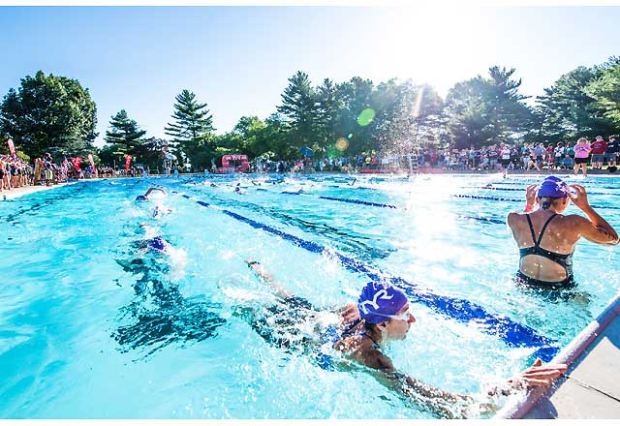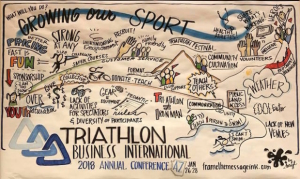How many people can you stick in an 8-lane, 50-meter pool? We now know it’s at least 1,500.
Last weekend Delmo Sports produced the Women’s Philadelphia Triathlon, a first-year race. Why is this notable? Why am I writing about it? No prize money, no pros, these folks aren’t a Slowtwitch Partner, there was no overlap between our partners and theirs. None of the typical reasons why magazines cover races applies here.
Nevertheless, I found this race newsworthy.

The logistics. Competitors traveled a serpentine route, under the lane lines and into the next lane over every lap. Eight lanes times 50 meters equals 400 meters, which was the length of the swim (followed by a 9-mile bike and a 5k run).
Usually in pool triathlons the swim takes place last, because there’s just no room for all those people. In this race the swim took place first. How? This raced used a streaming start, with swimmers self-seeded according to their abilities. "Waves will be self seeded by ability. Athletes will enter the water 2 at a time.”
I spoke to a number of competitors and spectators and no one reported a problem with the way this race took place. A big chunk of this event’s entrants were first-timers, and I suspect event completion and camaraderie – not finish time or place – overwhelmed the desire to boorishly prevail, oblivious to the cost of those in the athlete's proximity.

Second, Stephen Del Monte, the race organizer, cracked the women’s code. I promise you, there isn’t a women’s field in any triathlon Stephen produces that equals this one in number. We see this from time to time. The Danskin Series was multisport's participation touchstone, at least in its appeal to women, with participant totals that routinely surpassed 4,000 or 5,000. Whether it's women, millennials, Zoroastrians or philatelists, if you want them then get cracking on code cracking.
Third, triathlon is fine. Just, as I wrote earlier in the year, triathlon is only fine if the event sparks interest. Stephen heard Bob Babbitt talking up pool triathlons at a prior TBI Conference, and thought he’d give one a try. This race was the result.
Fourth, our sport’s sages, like Bob Babbitt, have been talking up pool triathlons, and relays, as gateway drugs for years. Few race organizers have listened. Stephen listened.

And finally, Life Time Fitness and its triathlons chose to come out from under the USA Triathlon sanctioning umbrella because, among other changes, it wanted athletes to serve penalties on the course during the race; and Life Time wanted athletes, "to select their own race experience, choosing from their own start time, competitive nature or even alongside friends and family," rather than waves that are always segregated by age and gender.
I don’t see how this event’s start is not a buddy wave. One rule of mine, in business, is to look hard for ways to say “yes” to my customer, instead of looking for ways to say “no”. If you can’t say “yes” to a buddy wave, or a family wave, how come it’s okay to say yes to a self-seeded wave with competitors leaving 2-at-a-time?

This event sold out, in this its first year, by a race director who had no idea how to put this race on when he first decided to produce it. It’s scheduled already for July 7, 2019. Our industry stakeholders ought to study this event.



